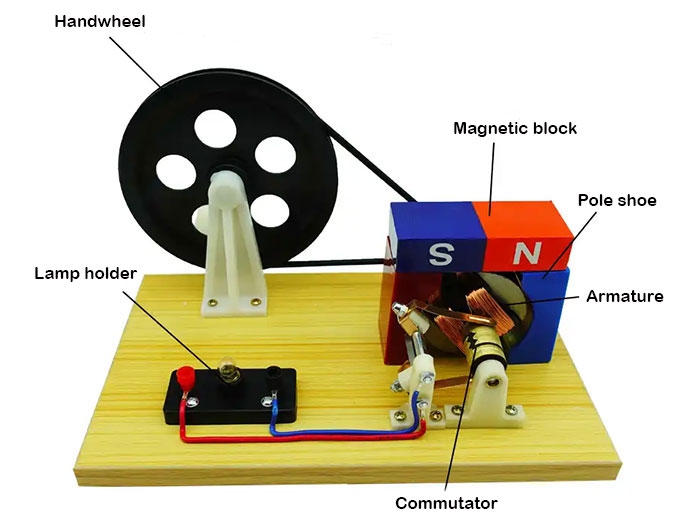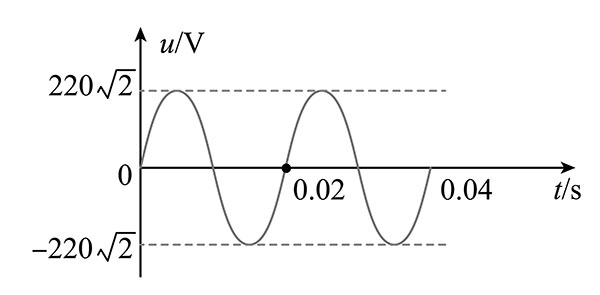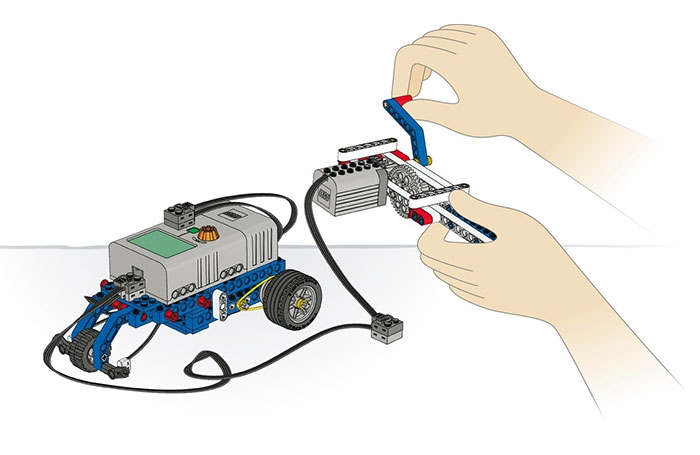A hand crank generator is a portable device that uses human power to rotate a mechanical structure and generate electrical energy. Its principle is based on electromagnetic induction, directly converting kinetic energy into electrical energy. Since it does not rely on external power sources or fuel, the hand crank generator plays an irreplaceable role in outdoor adventures, emergency rescue operations, and environments with limited energy supplies.
The history of hand-crank generators dates back to the 19th century. The world's first practical hand-crank generator was developed by British physicist Charles Wheatstone in 1840 for powering telegraph systems. During World War II, it was modified into a military portable generator, with its weight reduced from 15 kilograms to 5 kilograms. Early designs were primarily used for telegraph systems and military portable power sources. However, with advancements in materials and manufacturing processes, modern hand-crank generators can now provide stable DC output in a compact size. For example, the multi-functional hand-crank generator launched on the Powerhome website not only achieves breakthroughs in power and efficiency but also meets users' needs for rapid access to electricity in emergency situations.
Hand Crank Generator Structure & Detail
In practical applications, there are two common types of hand-crank generators. Permanent magnet-type hand-crank generators have a simple structure but lower power output, making them suitable for low-power applications such as charging mobile phones. Excitation-type hand-crank generators feature an electromagnetic iron structure, allowing adjustment of magnetic field strength to control output voltage, making them suitable for instruments and equipment requiring stable power supply. High quality AC hand-crank generators used in outdoor settings typically employ an excitation structure, offering a choice of 110V or 220V AC voltage, with a maximum power output of 45W.

The internal structure of a hand-crank electric generator includes a handle, gear set, rotor coil, stator magnet, rectifier, and voltage regulator module. The handle is connected to the gear set, with the larger gear driving the smaller gear to amplify the rotational speed through a gear ratio. The rotor coil is fixed to a rotating shaft, with stator magnets arranged around the coil. The spacing between the coil and magnets is precisely designed to maximize magnetic field strength. The rectifier converts AC to DC, while the voltage regulator module controls the output voltage to prevent current fluctuations from damaging equipment.
Hand Crank Generator Operating Process
The underlying physical principles involve the law of electromagnetic induction and the conservation of energy. When the coil cuts through the magnetic field lines, an electromotive force is generated, in accordance with Faraday's law: ε = BLv. The output voltage is directly proportional to the magnetic field strength, wire length, and cutting speed. The mechanical work provided by human effort equals the total of electrical energy and thermal energy, in accordance with E_(mechanical) - E_(electric) + Q_(thermal). Optimized design aims to reduce the proportion of thermal energy (Q), with specific measures including reducing coil resistance, using low-friction bearings, and optimizing magnetic circuit distribution.

The relationship between time t and voltage u in the sinusoidal alternating current variation of hand-crank generators.
When the handle of the generator is cranked, the gear system converts low-speed rotation into high-speed rotation, driving the rotor coil to rapidly cut through the magnetic field of the stator magnets. An alternating current is generated at the ends of the coil, which is converted into a direct current through the diode array of the rectifier. The voltage regulator adjusts the current and voltage, which are then supplied to the electrical devices via the output port. This process involves energy loss, with approximately 60% of mechanical energy converted into electrical energy, while the remaining energy is converted into gear friction heat and coil resistance heat.
The design flaws of hand-crank generators primarily manifest in energy conversion efficiency. The maximum power output from human-powered generation is approximately 100 watts, and continuous cranking for 10 minutes can only store 0.016 kilowatt-hours of electricity, which is insufficient to power a 40-watt light bulb for even half an hour. The new design of the Powerhome portable hand-crank generator offers two output modes. When the hand-crank is rotated at 2,000 RPM, it can produce a peak power of up to 20 watts. Faster startup generates higher voltage and power, improving power generation efficiency by 20%, making it ideal for emergencies, outdoor activities, disaster relief, and survival situations—a reliable power source when electricity or fuel is unavailable.
Test data shows that an adult rotating at a speed of 2 revolutions per second can achieve an output power of approximately 50 watts. A professional athlete can reach 150 watts with explosive rotation, but this cannot be sustained for more than 3 minutes. Children must use a speed-reducing gear to keep the rotation speed within a safe range. The specially designed dual-person cooperative generator can increase total power to 180 watts through a parallel circuit, making it suitable for emergency power supply for outdoor teams.
There are three key technical points for hand-crank generators: the gear ratio must match human force characteristics, with common ratios ranging from 1:5 to 1:8, ensuring both adequate speed and minimal effort. Magnets are made of neodymium iron boron material, with magnetic field strength over three times that of ordinary magnets. The number of windings typically ranges from 800 to 1,200, with wire diameter between 0.3 and 0.5 millimeters. Excessive windings increase resistance, while insufficient windings result in inadequate power generation.
Important Notes for Using Hand Crank Generators
Maintenance and Care: The gear assembly should be lubricated with lithium-based grease monthly to reduce friction wear. Regularly inspect the wire connections for oxidation and use sandpaper to polish the contact points. When storing for an extended period, disconnect the load circuit to prevent the magnets from demagnetizing. Common faults include gear jamming, wire breaks, and capacitor leakage. When repairing, use a multimeter to test the continuity of each module.
Emergency Use Precautions: Do not short-circuit the output terminals, as the resulting surge current may burn out the coil. In humid environments, insulation measures must be taken, and the handle should be wrapped with anti-slip rubber sleeves. When charging lithium batteries, an overcharge protection module must be installed to prevent battery overheating.

The development of hand-crank generators has evolved from powering telegraphs in the 19th century, to portable military generators during World War II, to today's lightweight and efficient miniature devices, reflecting humanity's continuous innovation in power generation methods. Although its energy conversion efficiency is limited, it remains the most reliable backup power source in scenarios where conventional electricity is unavailable. Especially in natural disasters, outdoor activities, and survival training, the value of hand-crank generators far exceeds their simple power generation function. They symbolize self-sufficiency and emergency preparedness.
Modern designs emphasize efficient magnetic circuits, low-friction bearings, and diverse output modes, further enhancing practical application experiences. Hand-crank generator sold by Power an Off-gird Home achieves higher energy utilization and more convenient operation through innovative gear ratios and stable voltage control modules, making it particularly suitable for outdoor travelers and emergency users. For those seeking reliability and flexibility, the hand-crank generator is not just a tool but a critical device for ensuring safety. In the future, with further advancements in materials and energy storage technology, such small-scale power generation devices will have even broader application prospects.
(1).png)


(1).png)